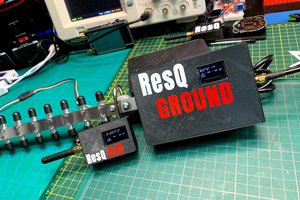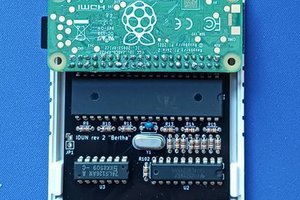For now, CalcHack adds the following hardware:
- Complete hardware control over calculator allowing it to be undetectable
- Cortex M4 main CPU with Cortex M3 coprocessor
- microphone
- speaker
- 9 axis sensor system (gyro, accelerometer, compass)
- 2.4gHz wireless communication network (NRF24L01) for chat, streams and MP games (and so much more)
- RTC
- SD-Card
- an extension port (mostly GPIO) that makes apps such as Multimeter, Oscilloscope, Logic analyzer, WS2812 LED-Strip controller and so on possible
And these Software functions:
- 5 Level grayscale support with 38Hz refresh rate
- 2D graphics functions: for now pixels, lines, triangles, rectangles and bitmaps, but much more will be added
- 3D Engine: A simple 3D engine with filled Polygons (rasterization) but no textures (on such a low-res screen real textures don`t make much sense, but a type of pseudo-texture will be added later) - will run smooth with about 150 polygons visible, 2000 loaded
- apps - not implemented yet, but you will be able to run apps of the sd card. Apps can be downloaded via network and saved to the SD card from where they can be run.
- functions for controlling every aspect of the calculator: enabling/disabling main and backup battery, pushing any button, even the ON button which is normally not accessible (separate control line)
- simultaneous keypress support: even though simple I find it quite important to mention, because TIBasic doesn`t support more than one keypress at the time.
At the moment the only tested calculator is the TI-82 STATS, which is one of the slowest of the TI graphic series you`ll come by today. But CalcHack software is made to be cross platform and support all black and white graphical calculators from TI. In the future it might even support other brands.
Aim:
As soon as the main libraries and engines are written, writing apps for CalcHack will be very easy. Then I will mass produce CalcHack hardware via Kickstarter to allow everyone to superpower their calculators.
Sadly, the main CPU broke while soldering, and I`m still waiting for a replacement, because of this many functions are not available yet; all the code runs on the slower, Cortex M3 coprocessor for now. Because of this some Demos you see here run with a cable connected to the Linkport, which connects the main CPU which normally would be on the CalcHack PCB itself.




 Eric Wiiliam
Eric Wiiliam
 Xasin
Xasin
 idun-project
idun-project
 ChaosChris
ChaosChris
This is awesome! I'll have to try it.